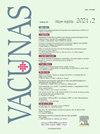Exploring structural proteins of Nipah, Lassa, and coronaviruses for multi-epitope vaccine design using immuno-informatics and in silico studies
Q3 Medicine
引用次数: 0
Abstract
Objective
In recent years, public awareness of the risks posed by zoonotic diseases has significantly increased. Nipah virus (NiV) and Coronavirus are known to cause serious respiratory and neurological effects, while Lassa virus is a hemorrhagic virus. The current study employs an immunoinformatics approach to predict antigenic epitopes against NiV, Lassa virus (LASV), and Severe Acute Respiratory Syndrome Coronavirus-2 (SARS-CoV-2) for the development of multi-epitope vaccines (MEV) and to identify the potential drug molecules using molecular docking approaches.
Results
Thirteen Cytotoxic T lymphocyte (CTL) epitopes for SARS-CoV-2, three for NiV, and three for LASV were selected. Additionally, eight Helper T lymphocyte (HTL) epitopes for NiV, seven for SARS-CoV-2, and five for LASV, all of which demonstrated antigenicity, non-allergenicity, and non-toxicity were identified and included. Molecular docking and subsequent construction of the 3D structure for the best epitopes from each virus revealed stable and strong binding affinities between the MEV and human pathogenic Toll-like receptors (TLRs), specifically TLR3 and TLR8.
Conclusion
This work presents evidence of in silico research on vaccine design and molecular docking against the Nipah, Lassa viruses and SARS-CoV-2 target proteins. It highlights the computational approaches used for drug repurposing and the exploration of natural drug compounds. These findings suggest that the plant-derived or naturally sourced drugs exhibit significant potential in combating viral diseases in humans.
利用免疫信息学和计算机研究探索尼帕病毒、拉沙病毒和冠状病毒的结构蛋白,用于设计多表位疫苗
目的近年来,公众对人畜共患疾病风险的认识显著提高。已知尼帕病毒和冠状病毒会引起严重的呼吸道和神经系统影响,而拉沙病毒是一种出血性病毒。本研究采用免疫信息学方法预测针对NiV、拉沙病毒(LASV)和严重急性呼吸综合征冠状病毒-2 (SARS-CoV-2)的抗原表位,用于开发多表位疫苗(MEV),并利用分子对接方法鉴定潜在的药物分子。结果共筛选出13个SARS-CoV-2细胞毒性T淋巴细胞(CTL)表位,3个NiV表位,3个LASV表位。此外,鉴定并纳入了8个NiV、7个SARS-CoV-2和5个LASV的辅助T淋巴细胞(HTL)表位,这些表位均具有抗原性、非过敏原性和无毒性。各病毒最佳表位的分子对接和随后的3D结构构建表明,MEV与人类致病性toll样受体(TLRs),特别是TLR3和TLR8之间具有稳定而强的结合亲和力。结论本研究为针对尼帕病毒、拉沙病毒和SARS-CoV-2靶蛋白的疫苗设计和分子对接提供了计算机化研究证据。它强调了用于药物再利用和天然药物化合物探索的计算方法。这些发现表明,植物来源或天然来源的药物在对抗人类病毒性疾病方面具有巨大的潜力。
本文章由计算机程序翻译,如有差异,请以英文原文为准。
求助全文
约1分钟内获得全文
求助全文
来源期刊

Vacunas
Medicine-Infectious Diseases
CiteScore
3.90
自引率
0.00%
发文量
138
审稿时长
62 days
期刊介绍:
Sin duda una de las mejores publicaciones para conocer los avances en el campo de las vacunaciones preventivas, tanto en el ámbito de la investigación básica como aplicada y en la evaluación de programas de vacunaciones. Su alta calidad y utilidad la ha llevado a estar indexada en los prestigiosos índices IME y SCOPUS.
 求助内容:
求助内容: 应助结果提醒方式:
应助结果提醒方式:


